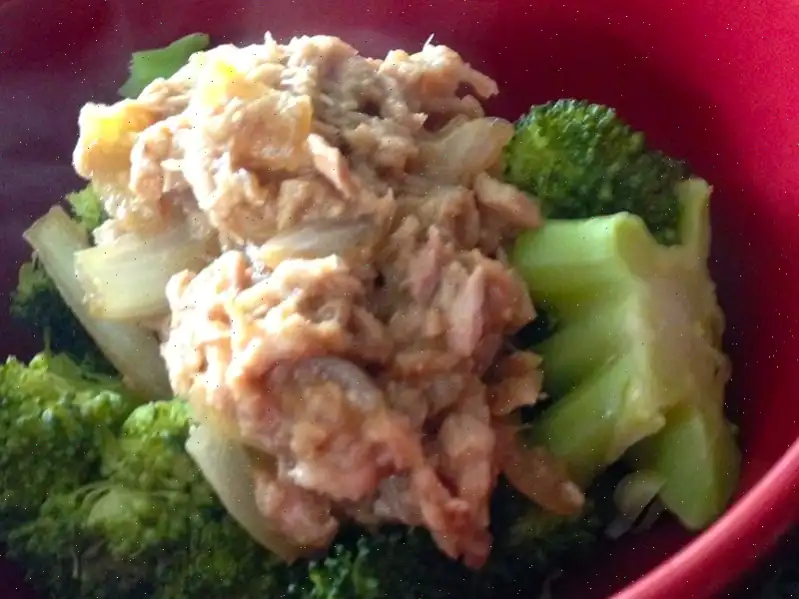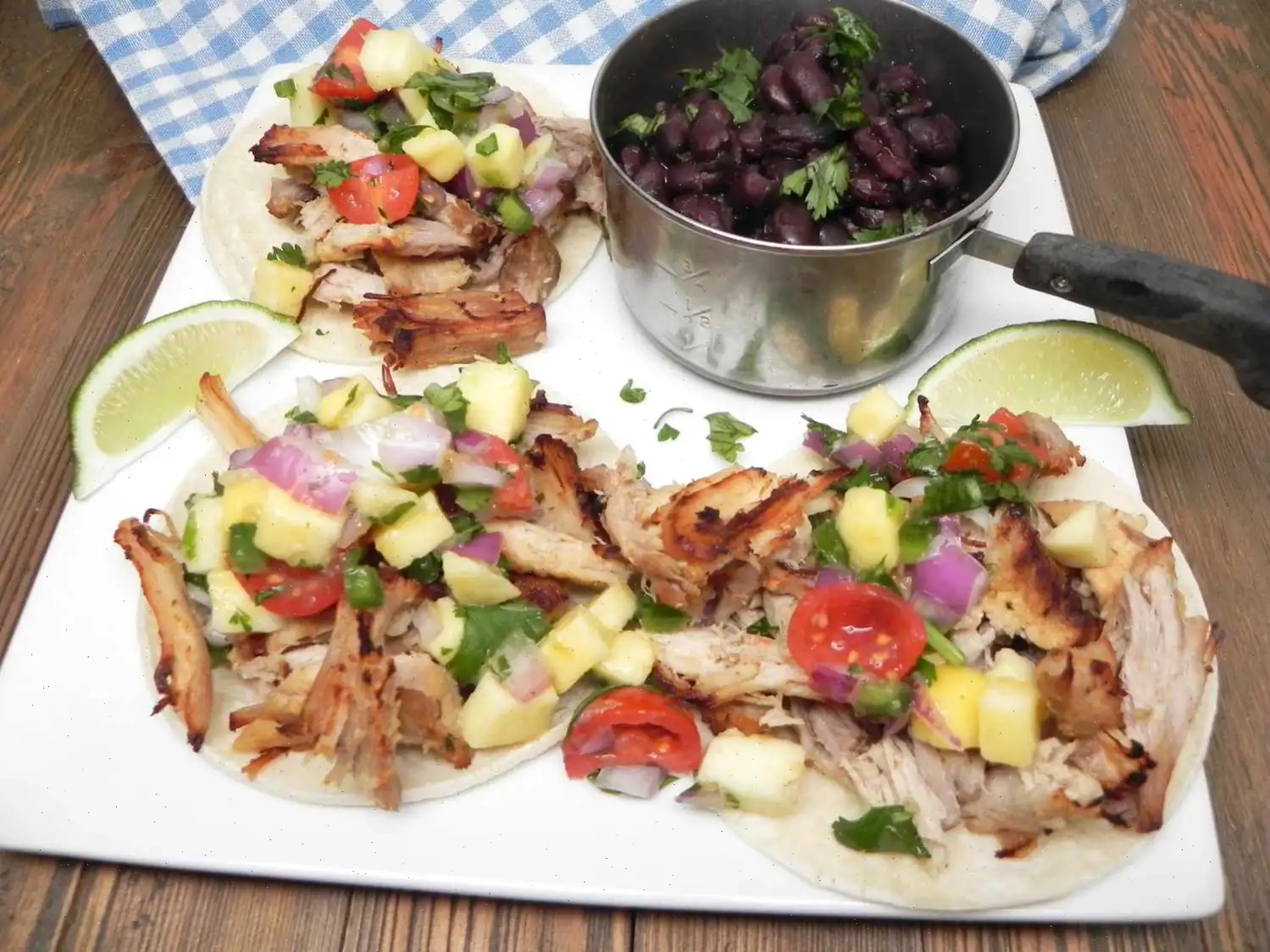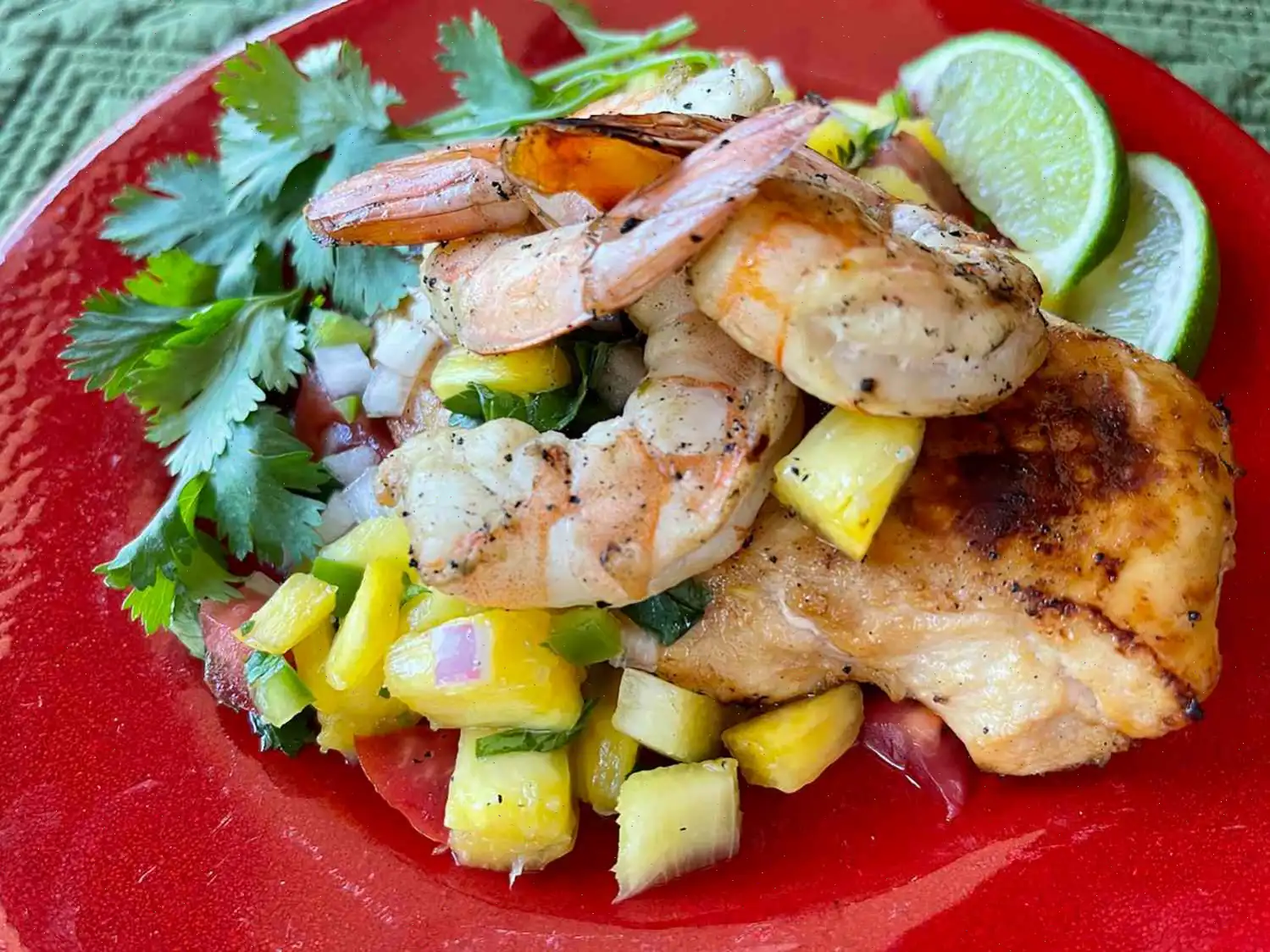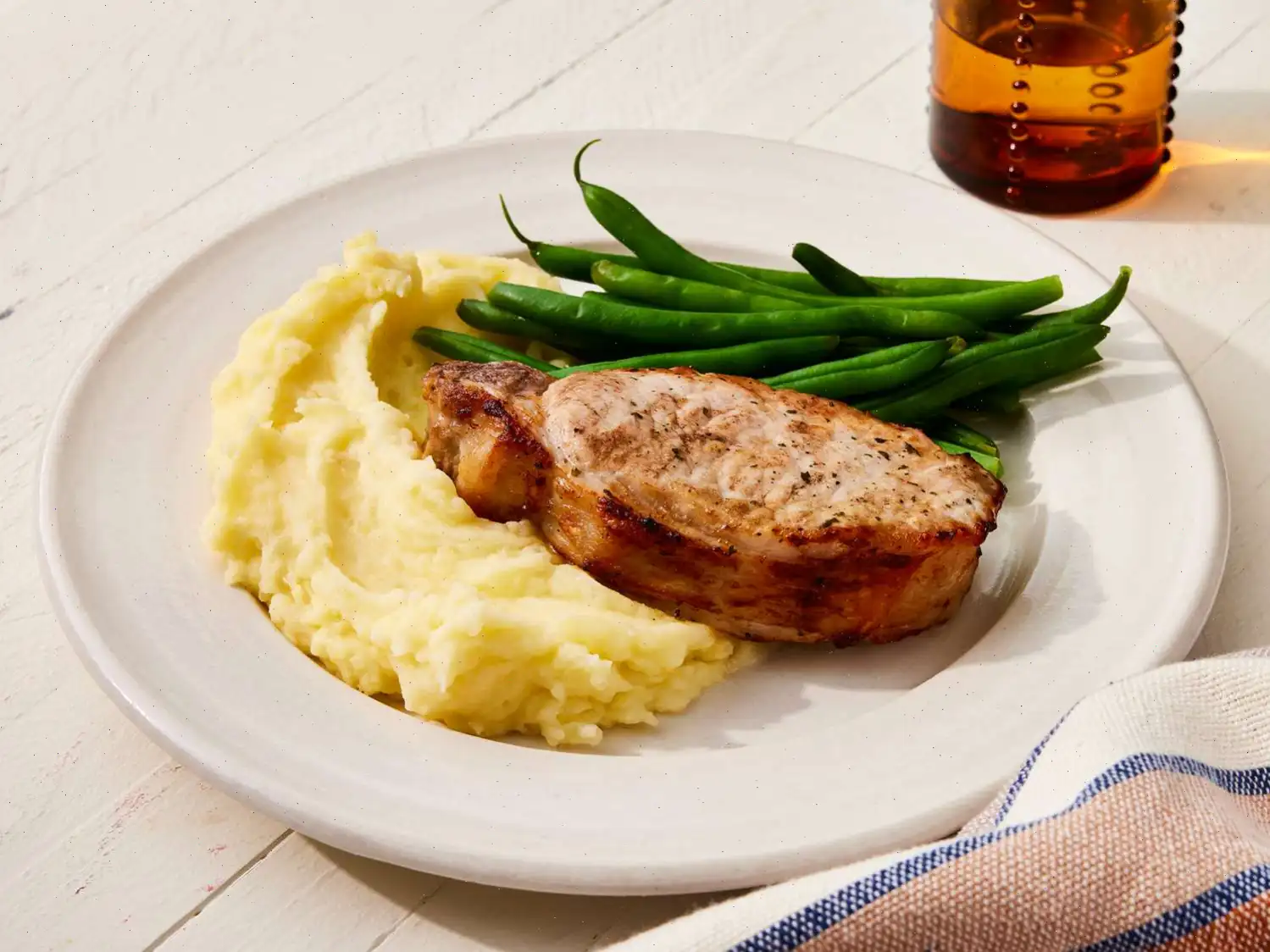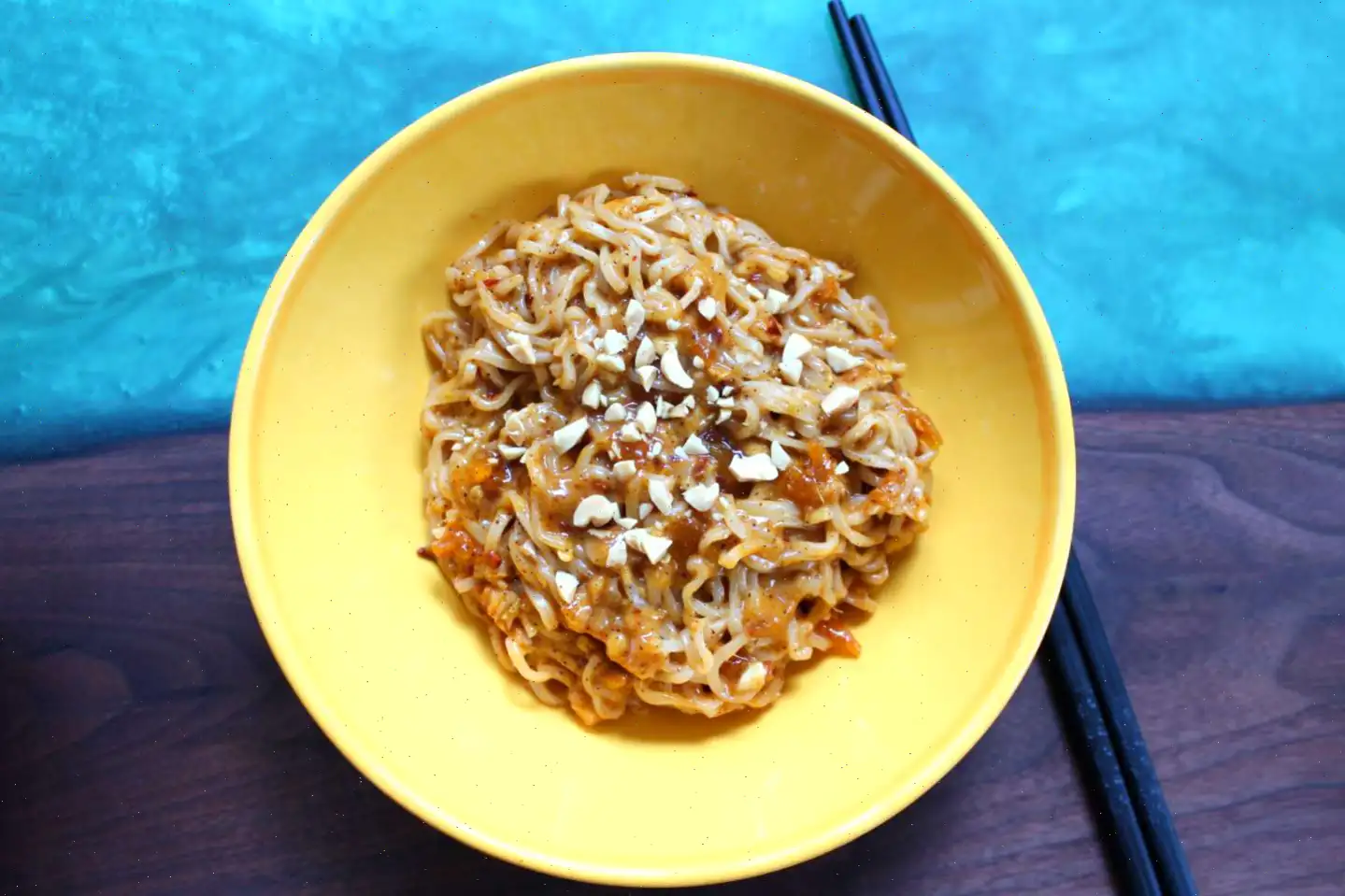
Tuna From Can To Frying Pan Recipe
Recipe for Steamed Broccoli with Tuna and Teriyaki Sauce
Original Recipe Yield: 2 servings
Ingredients:
- 2 cups broccoli florets
- 2 tablespoons butter
- Salt and pepper, to taste
- 1 (5 ounce) can tuna packed in oil, drained
- 1 tablespoon teriyaki sauce
- 1 pinch garlic powder
Directions:
- Place a steamer insert into a saucepan and fill it with water just below the bottom of the steamer. Cover and bring the water to a boil over high heat.
- Once the water boils, add the broccoli florets. Steam the broccoli for 2 to 6 minutes, depending on the size of the florets, until just tender.
- Remove the broccoli from the steamer and transfer it to a serving bowl. Toss with butter, adding salt and pepper to taste.
- In a skillet, heat the drained tuna, teriyaki sauce, and garlic powder over medium heat. Stir occasionally and cook until the tuna is heated through, about 5 minutes.
- Pour the heated tuna mixture over the steamed broccoli. Serve immediately.
Nutrition Facts (per serving):
| Calories | 269 |
|---|---|
| Total Fat | 17g |
| Saturated Fat | 8g |
| Cholesterol | 42mg |
| Sodium | 683mg |
| Total Carbohydrates | 8g |
| Dietary Fiber | 2g |
| Total Sugars | 3g |
| Protein | 22g |
| Vitamin C | 79mg |
| Calcium | 56mg |
| Iron | 2mg |
| Potassium | 440mg |
* Percent Daily Values are based on a 2,000 calorie diet. Your daily values may be higher or lower depending on your calorie needs.

Quick, simple, and surprisingly tasty, this Tuna From Can To Frying Pan recipe is perfect for busy weeknights. It features pantry staples like canned tuna, teriyaki sauce, and broccoli, yet comes together in under 25 minutes. Here is the story behind this easy meal and why it has become a favorite for many.
History of the Dish
The concept of canned tuna dates back to the early 20th century, when it was first commercially produced in the United States and became an inexpensive protein source. Over the years, canned tuna became a pantry staple in many households, particularly for quick meals. The dish itself, combining tuna with vegetables and simple seasonings like teriyaki sauce, is a modern take on a quick and satisfying meal, popular in households across North America and beyond. It's a great example of how home cooks use minimal ingredients to create flavorful dishes with little effort.
Regional Variations
While the base recipe for this dish is fairly universal, regional variations exist depending on local ingredients and flavors. In Japan, canned tuna is often used in rice bowls, such as "donburi," where its paired with soy sauce or teriyaki. In Mediterranean countries, olive oil-packed tuna might be used instead, and sometimes combined with olives, capers, and fresh herbs. Some people add a squeeze of lemon or top the dish with fresh herbs for an extra zing, showcasing the versatility of this simple dish.
How It Differs from Similar Dishes
What sets this dish apart from other canned tuna recipes is the method of cooking the tuna in a frying pan with teriyaki sauce and garlic powder, which transforms its flavor from the typical "canned" taste to something much closer to a grilled tuna steak. Unlike tuna salad or tuna casserole, this recipe focuses on the natural flavor of the tuna, giving it a savory depth and a hint of sweetness from the teriyaki sauce. The addition of steamed broccoli complements the dish with a nutritious, fresh crunch.
Where It's Typically Served
This dish is a casual, quick meal that is perfect for a family dinner or a solo lunch. It is commonly served as a weekday meal when time is short, but it can also be enjoyed as part of a larger meal spread in more relaxed settings. It pairs wonderfully with steamed rice, or for a lighter version, you can serve it with a side salad or roasted vegetables. In some households, its a go-to comfort meal, while in others, it is an easy way to get kids to eat their vegetables.
Interesting Facts
- Canned tuna has been a dietary staple in the U.S. since the early 20th century, and its a key part of the American diet, especially during the Great Depression due to its affordability and long shelf life.
- Tuna, when packed in oil, has a richer flavor and a smoother texture compared to the water-packed version. The oil adds flavor and moisture, making it perfect for frying.
- Teriyaki sauce, used in this recipe, originated in Japan and is made from soy sauce, mirin (sweet rice wine), and sugar. It adds a delicious sweet-salty contrast to the tuna.
- Broccoli, one of the main ingredients in this recipe, is not only healthy but also packs a punch when it comes to vitamins. A single serving can provide over 100% of your daily recommended intake of Vitamin C!
FAQ about Tuna From Can To Frying Pan Recipe
Comments
Kenneth Rodriguez
04/10/2023 03:35:28 PM
I cooked up a delicious meal by sautéing chopped mushrooms in teriyaki sauce, then adding broccoli and cooking for 5 minutes. I then mixed in two cans of tuna and cooked for another 5 minutes, making sure to eliminate any "can" taste. I seasoned it with sriracha, black pepper, fresh garlic, and chopped onion, though I accidentally forgot the butter. Enjoying it now with leftover sriracha rice from last night, this dish is absolutely delightful! I have a feeling this will become a go-to meal that I'll crave often. Thank you for introducing me to this tasty combination of flavors!
Rebecca Thomas
07/14/2024 04:24:43 AM
The tuna recipe I found by googling was absolutely amazing! I decided to take a chance on it and it turned out to be really delicious. One suggestion for a different twist would be to incorporate some peanuts for added texture, but honestly, it's perfect just the way it is!
Robert White
07/31/2024 02:56:39 AM
I didn't have any teriyaki sauce on hand, so I substituted a bit of Worcestershire and balsamic. I baked broccoli and cauliflower and then topped them with tuna. The dish turned out to be absolutely delicious!
Aaron Davis
06/04/2025 06:01:09 PM
My mom showed me a recipe that's similar, but instead of teriyaki sauce, we use soy sauce without any added salt. Just serve with steamed white rice and you're good to go. It's a quick and delicious dish!
Linda Walker
02/05/2025 05:07:12 PM
I didn't have teriyaki sauce, so I substituted crushed red pepper paste to my liking... and it turned out incredibly delicious!
Kelly Wright
02/14/2024 12:00:24 PM
I swapped out the teriyaki sauce for soy sauce and it made a fantastic difference in the recipe! Especially when served with steamed rice, this dish is really delicious.
David Young
09/05/2024 12:16:34 PM
This was extremely unpleasant, it ruined my entire breakfast. Teriyaki and Tuna is a horrible mix.


